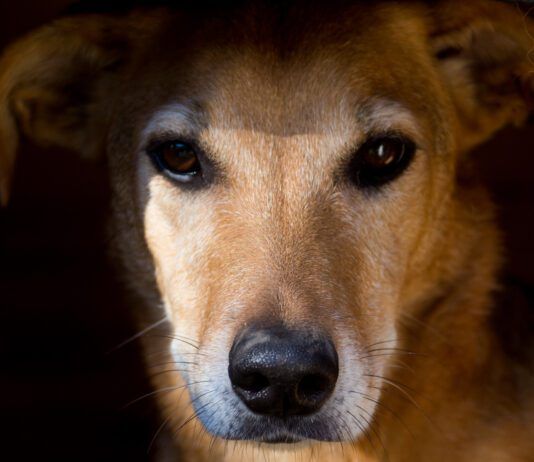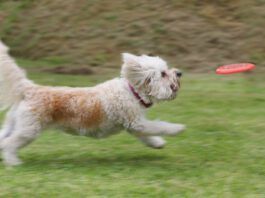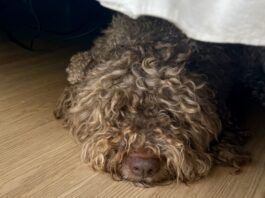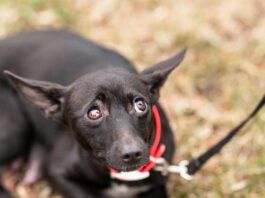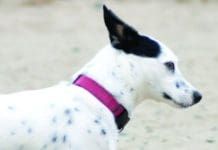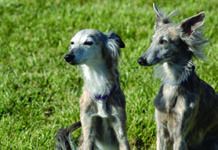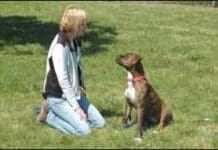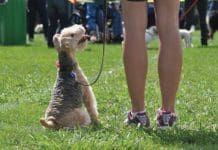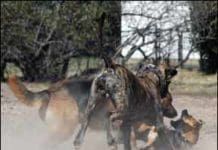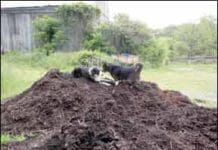5 Things to Know About A Dog’s Threshold
has tuned out his owner
Wolves, Dogs, Differ in Ability to Digest Starches
Study finds genetic differences between dogs and wolves, with dietary implications. Domestication appears to have led to genetic changes in dogs that make them able to digest starches better than wolves can, according to a paper published in Nature in January.
Your Guide to Dog Facial Expressions
There is great value in having a solid understanding of canine facial expressions and their accompanying body language and behavior. The following are some of the more common canine communications offered by those very expressive furry faces. Keep in mind, though, that when drawing conclusions about a dog's facial expressions, it's important to factor in the rest of the body language in order to get the whole message.
Dogs with the MDR1 Mutation: Drug Sensitivities
Most dog owners are aware that Collies and other herding breeds may be sensitive to ivermectin, used for heartworm prevention and to treat certain parasites. But did you know that these dogs can also be sensitive to a number of other drugs, and that other breeds can also be affected?
Helping Your Dog with His Separation Anxiety Issues
This is the sort of desensitizing exercise recommended for a dog with separation anxiety. The goal is to actually do the exercise so many times, in such small increments, and without ever allowing the dog to go past threshold" (become anxious at all)
Treating Your Dog’s Separation Anxiety
and it helped keep Sandi sane.üAn early meeting of Sandi's SA Support Group" (and their dogs
Teaching Your Dog Calm, Slow Breathing
Radio talk show psychologist Dr. Joy Browne offers her listeners a stress-reducing “Square Breathing” technique. To relax before or during any potentially anxiety-producing experience, try square breathing: Inhale to the count of four, hold to the count of four, exhale to the count of four, and hold for four. With practice, you can increase each side of the “square” to a count of eight or even 20; the longer the count, the slower and more calming the breathing.
Leash Reactivity in Otherwise Friendly Dogs
If you hang around with other dog owners, you've no doubt heard the same comment I have, over and over again: My dog is fine with other dogs when he's off-leash; he's only dog-aggressive when his leash is on." You may have even said it yourself. The reason it's an often-heard comment is that it's a common behavior: A lot of dogs who are fine with other dogs when left to their own devices become aggressive if they are leashed when they meet other dogs."
Counter-Conditioning and Desensitization for Reducing Dog Reactvity
Counter-conditioning involves changing your dog’s association with a scary or arousing stimulus from negative to positive. Desensitization is starting with a very low-level intensity of aversive stimulus until the dog habituates to (or changes his association with) the aversive, and then gradually increasing the strength until the dog is comfortable with the stimulus at full intensity. The easiest way to give most dogs a positive association and to help them become comfortable with a stimulus is with very high-value, really yummy treats. I like to use chicken – canned, baked, or boiled; most dogs love chicken. Here’s how the CC&D process works.
Touch/Restraint Desensitization Protocol
Touch dog’s shoulder with one hand, feed treat with other hand, remove both hands. Repeat multiple times until touch to the shoulder elicits an automatic look for the other hand to arrive with treat. Move touch process to various other parts of dog’s head and body until a touch anywhere on the dog elicits an auto-look for the delivery of a treat. Pay extra attention to any body part where your touch seems to elicit a more intense response from the dog.
5 Ways to Break Up a Dog Fight
A dog fight that goes beyond a brief scuffle and doesn’t resolve quickly is frightening to behold. In fact, it’s one of the behavior scenarios most likely to result in significant injury to humans, not to mention the dogs. The first, most important thing to remember is keep yourself safe. After that, here are five things to do to try to end the conflict as quickly as possible, with minimal bloodshed.
How to React to a Dog’s Bully Behavior
There’s nothing like a good dog-pack hike to give our canine companions an opportunity to have fun with their peers and run themselves into a happy state of exhaustion – provided there are no canine bullies in the group. Just like human bullies on a school playground, canine bullies take the fun out of the game, put everyone on edge, and bring to the party a real risk of physical as well as psychological damage. A dog who is bullied, especially at a young age, can quickly develop a negative association with other dogs and become defensively aggressive as a result.


